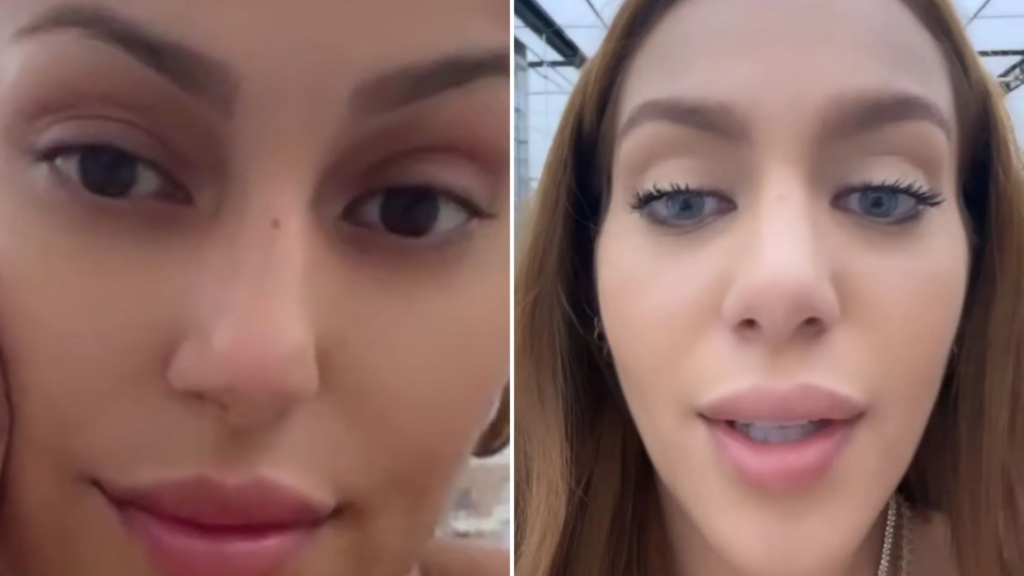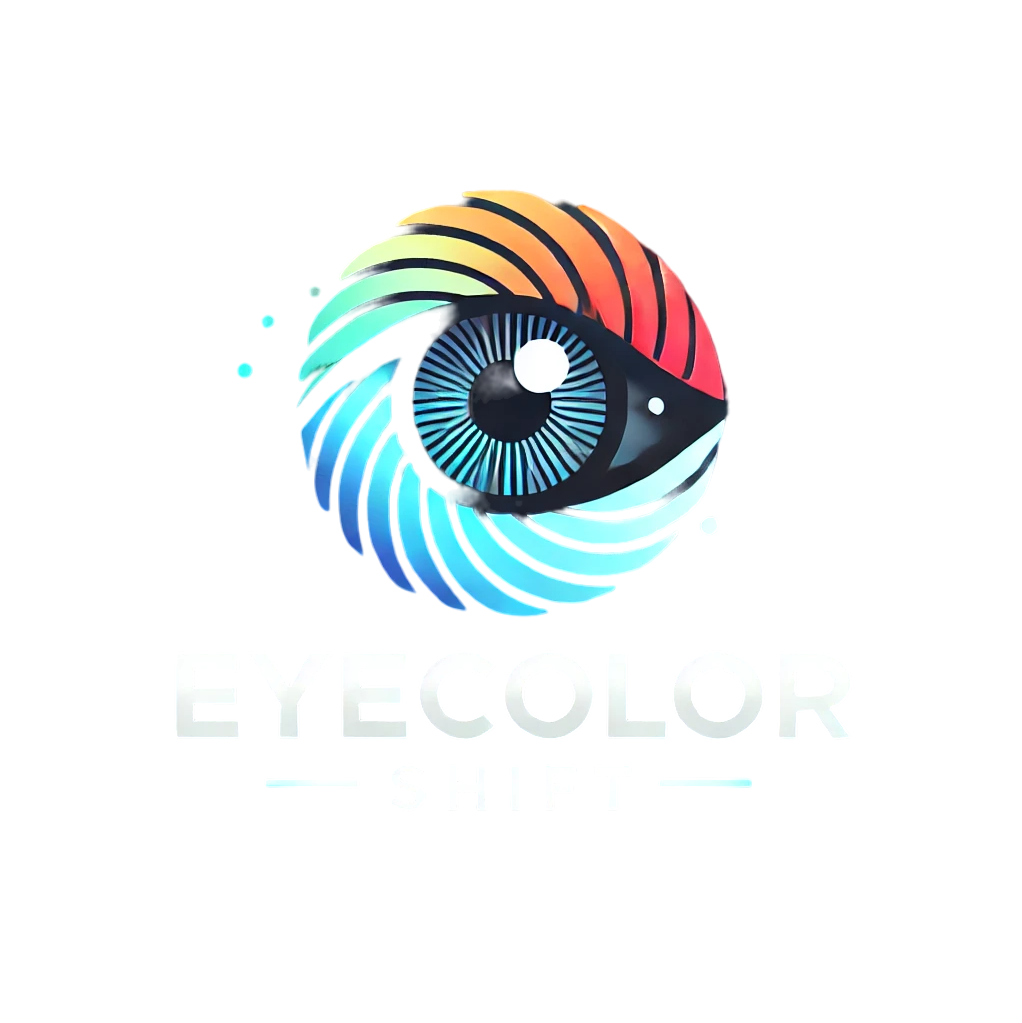Layyons Valença and Her Keratopigmentation Experience: A Real Look at Cosmetic Eye Color Surgery

- Introduction
- Who Is Layyons Valença & What Motivated Her Eye Color Change?
- What Is Keratopigmentation and How Does It Work?
- What Happened After Layyons’s Procedure?
- Risks and Medical Warnings About Cosmetic Keratopigmentation
- Safer Alternatives to Change Eye Color
- Conclusion: Think Long-Term When Choosing Eye Surgery
- FAQ: Layyons Valença & Her Keratopigmentation Experience
Changing your eye color might seem like a glamorous trend — but for Brazilian model Layyons Valença, it became a personal experiment with emotionally complex results. In 2023, she traveled to Lausanne, Switzerland for a keratopigmentation procedure (a cosmetic corneal tattoo) to achieve blue eyes after wearing blue lenses for nearly a decade.
In this detailed guide, we'll explore her case with real-world data as of July 2025, how the procedure works, what the risks are, and safer ways to alter eye appearance.
Introduction
Ever imagined having icy-blue eyes instead of brown? You’re not alone. But making that permanent can carry risks. Layyons Valença’s story is now one of the most viral and widely analyzed keratopigmentation cases in the cosmetic world.
In this article, you’ll learn:
- The real facts about Layyons Valença’s surgery and aftermath
- How keratopigmentation works technically
- What leading ophthalmologists now say about it
- Safer and reversible ways to change eye color
Let’s explore this viral trend with clarity, science, and care for your vision.
Who Is Layyons Valença & What Motivated Her Eye Color Change?
Layyons Valença is a Brazilian model and social media personality who made headlines in 2023 for undergoing a permanent eye color change using keratopigmentation in Switzerland—not Colombia as commonly mistaken.

Why She Did It
She reported being unhappy with her natural brown eyes, feeling unattractive, and even bullied. After years of wearing blue contact lenses and developing eye infections, she paid nearly $10,000 USD for a permanent solution.
“I felt ugly with my brown eyes,” she told international media. “Now they’re blue — and mine.”
Her decision sparked intense debate on social media and professional forums alike.
What Is Keratopigmentation and How Does It Work?

The Technical Procedure
Keratopigmentation is a cosmetic surgical method that injects pigment into the cornea to mask the natural iris color.
| Step | Process Overview |
|---|---|
| 1. Pre-Evaluation | Eye mapping, measuring corneal thickness |
| 2. Laser Channeling | Femtosecond laser creates micro-tunnels in the cornea |
| 3. Pigment Injection | Pigment is inserted precisely to match the desired shade |
| 4. Recovery | Eye drops, sunglasses, and screen avoidance for 2–3 weeks |
The procedure is not FDA- or EMA-approved for cosmetic use and remains largely experimental.
What Happened After Layyons’s Procedure?

Positive Aesthetic but Emotional Complexity
Her before-and-after video went viral on TikTok with 20+ million views, and she initially reported no severe medical issues. But emotionally, the change came with complexity:
“There were days I didn’t even want to look at myself in the mirror,” Layyons admitted.
Though she achieved her dream look, the psychological impact reveals that even successful surgeries can lead to post-operative doubt or identity tension.
Risks and Medical Warnings About Cosmetic Keratopigmentation
Ophthalmic Complications Documented by Experts
While Layyons hasn’t reported vision loss, the following risks are widely cited:
- Infection: Introduction of bacteria into the cornea
- Corneal inflammation & haze: Reduces visual clarity
- Glare, starbursts, halos: Especially under artificial lights
- Color fading or uneven pigment: Over time, the pigment may degrade
- Diagnostic interference: Can obscure cataract evaluation or retina scans
- Irreversibility: Removing pigment is often dangerous and unreliable
⚠️ Doctors stress that even if short-term results are positive, long-term issues can still develop.
Regulatory Status in 2025
Keratopigmentation for cosmetic use remains experimental and is not officially approved by major medical regulatory bodies:
| Region | Regulatory Status |
|---|---|
| United States | ❌ Not FDA-approved |
| Europe | ❌ Not EMA-approved for cosmetics |
| Brazil | ❌ Prohibited |
| Switzerland | ⚠️ Available but unregulated |
Medical organizations worldwide discourage the use of this surgery in healthy eyes.
Safer Alternatives to Change Eye Color
| Method | Safety | Permanence | Comments |
|---|---|---|---|
| Colored Contact Lenses | ✅ Very safe | ❌ Temporary | Must be properly fitted by a professional |
| Keratopigmentation | ⚠️ Risky | ✅ Semi-permanent | Irreversible, unapproved |
| Iris Implants | ❌ Very risky | ✅ Permanent | High rates of vision loss |
| Laser Depigmentation | ⚠️ Experimental | ✅ Permanent | Not widely tested or approved |
🟢 Our recommendation: Stick to contact lenses — safe, regulated, and reversible.
Conclusion: Think Long-Term When Choosing Eye Surgery
Layyons Valença’s story may not include vision loss, but her journey still demonstrates the emotional and medical risks tied to permanent eye color change.
The outcome may not be natural, and the color may shift or fade. As more people chase aesthetic trends, we urge: don’t risk your vision for viral beauty.
At Eye Color Change, we’re here to guide you to safe and confident decisions.
FAQ: Layyons Valença & Her Keratopigmentation Experience
1. Who is Layyons Valença, and what eye color change procedure did she undergo?Layyons Valença is a Brazilian model and influencer who underwent keratopigmentation (corneal tattooing) to change her natural brown eyes to blue. This cosmetic procedure involves injecting pigment into the cornea.2. Where did Layyons Valença have her keratopigmentation surgery?Her surgery was performed in Lausanne, Switzerland, not Colombia as initially speculated. Her transformation went viral on TikTok, sparking debate and curiosity.3. What were her motivations for the surgery?Layyons wanted blue eyes due to self-image issues and years of bullying. After infections from contact lenses, she sought a permanent solution and paid around $10,000 USD.4. What did she report after the procedure?While initially satisfied, she later shared emotional struggles and discomfort with her new look, despite not reporting severe medical complications.5. Is keratopigmentation medically approved?No. It is not FDA or EMA approved for cosmetic use and is considered experimental by major health authorities worldwide.6. What are the key risks involved?
- Infection
- Corneal scarring
- Visual disturbances like halos or glare
- Unnatural or fading color
- Complications in future eye surgeries
- Irreversibility of the pigment
7. How does her case compare to Daniela Requena’s?Both underwent keratopigmentation and initially defended it. Over time, both expressed mixed feelings, suggesting aesthetic dissatisfaction or emotional impact, even if not medical failure.8. What do ophthalmologists say?They strongly advise against cosmetic keratopigmentation, citing serious long-term risks to eye health and the lack of regulatory approval.9. Are there safer alternatives?Yes — colored contact lenses are the safest and most medically approved alternative. They are temporary, reversible, and regulated.10. Is it becoming safer due to popularity?No. Popularity on social media does not equal medical approval. Risks remain high, and experts continue to discourage the procedure.Learn more with our detailed guides on colored contacts, read about keratopigmentation, or connect with our certified eye experts.

Leave a Reply